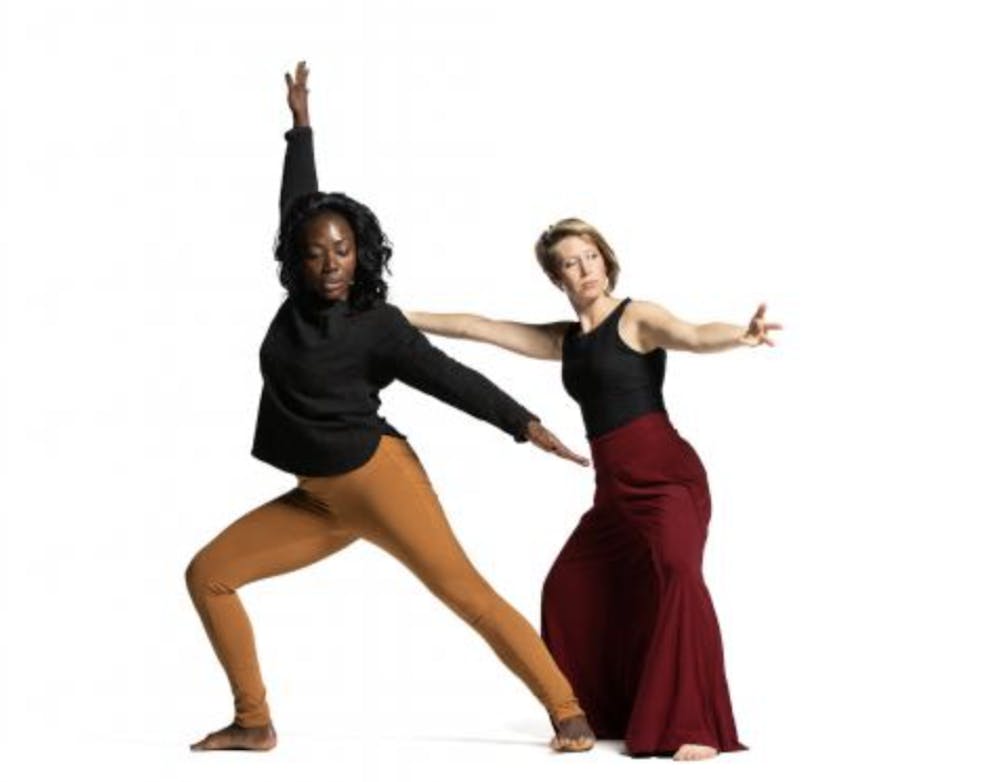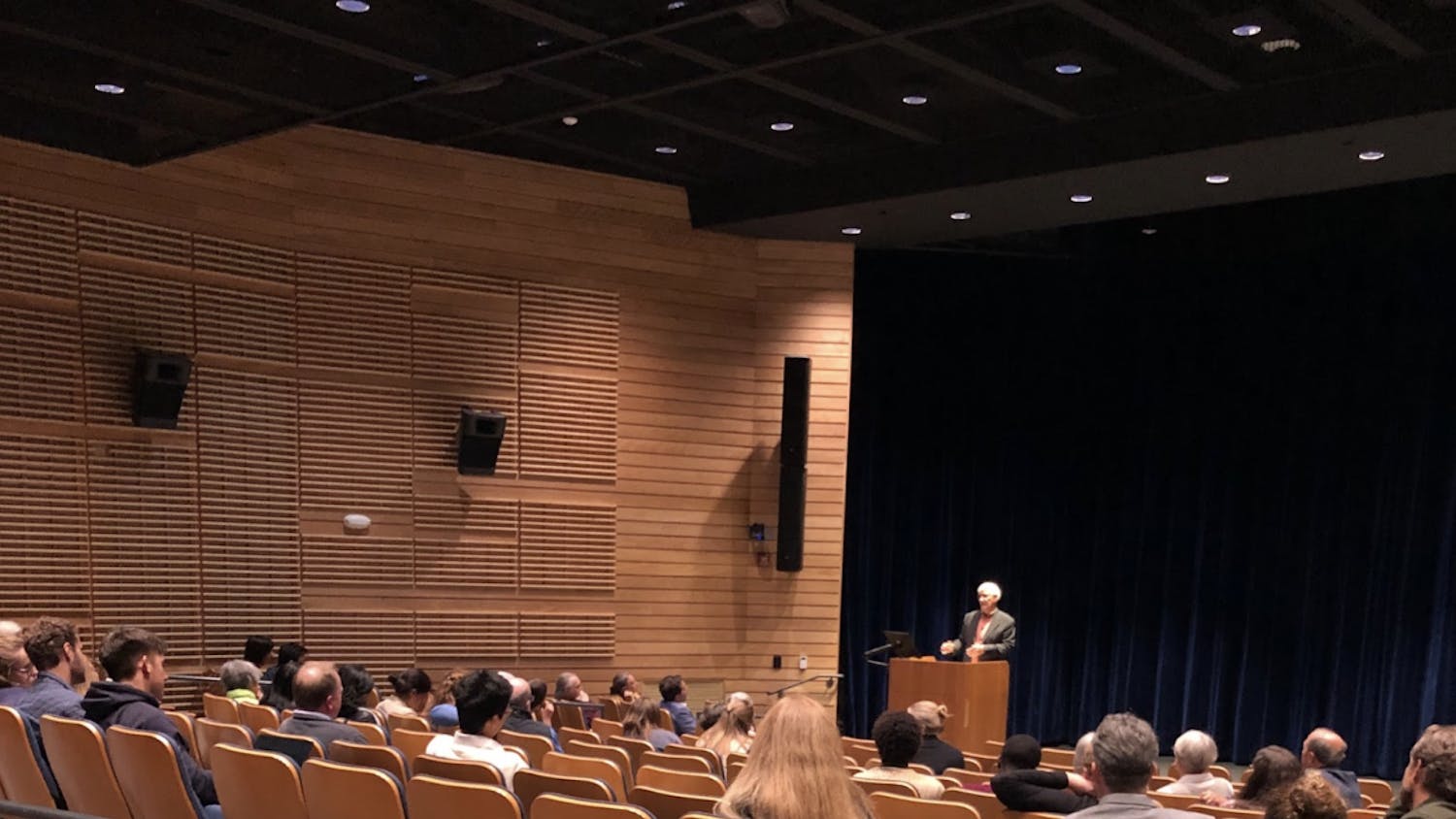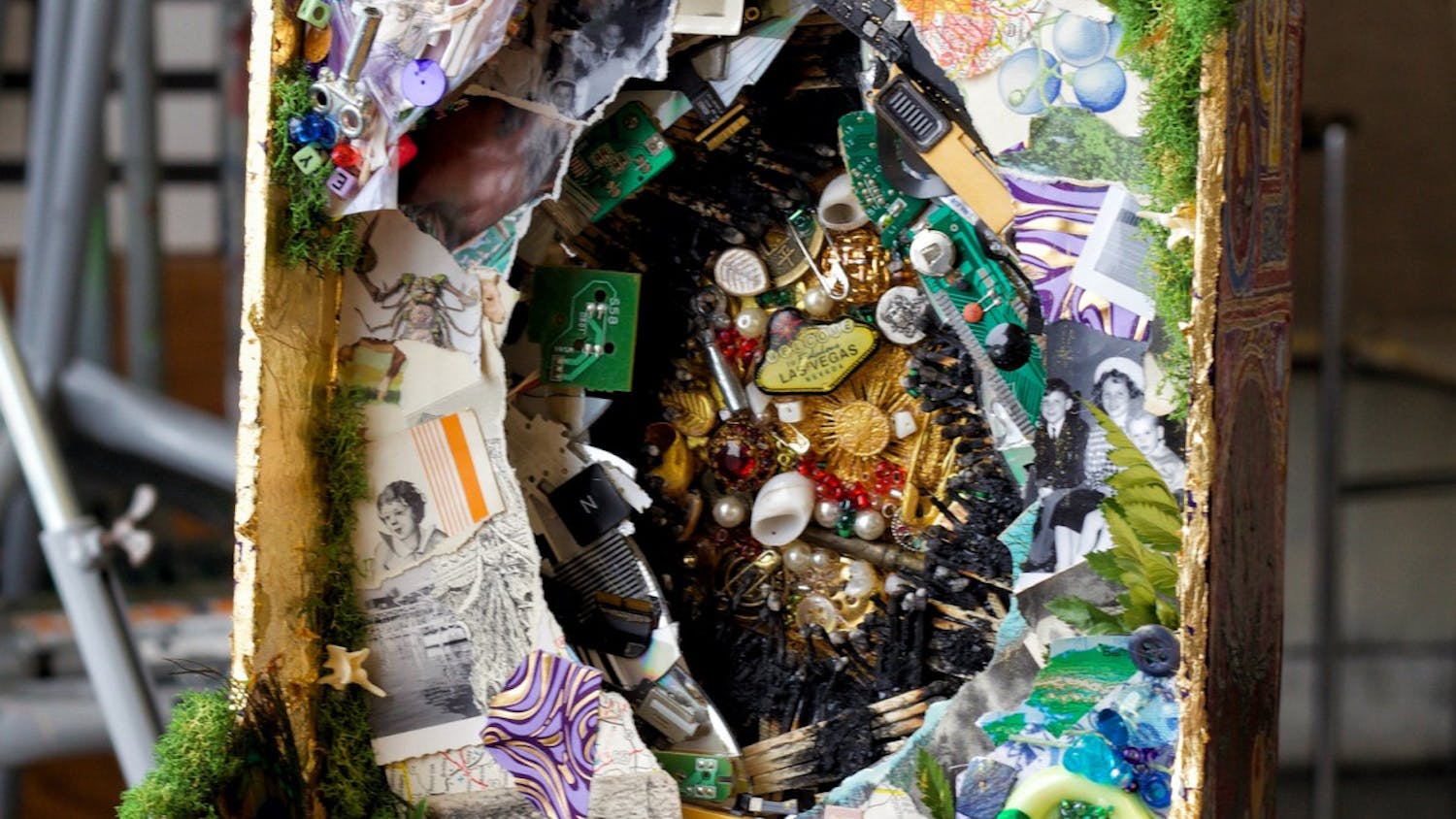Middlebury College Dance Department Professors Lida Winfield and Christal Brown performed their first in-person performance of “Same But Different” on Friday, Sept. 23. They performed as part of this year’s Clifford Symposium, which focused on conflict transformation.
The piece received its name from their shared and divergent identities. They share many personality traits and experiences, but Brown is Black, and Winfield is white. It “highlights our [Winfield’s and Brown’s] similarities, but because of what we look like, the world may never connect the dots,” Brown said in the performance program.
Having created the piece during the pandemic, Brown and Winfield choreographed and developed the dance in Brown’s garage. Given pandemic restrictions, there was no live audience for their original performance — it was only available via a recording.
The piece was a mix of contemplation and statement about the performers’ similarities and differences, their worlds, love for them and love for each other. They presented these contemplations and emotions through a combination of movement and narrative storytelling. As the two showed the audience their story through the same choreography — but with each of their own styles infused — they orally told their own and each other’s stories as well.
The two narrated their schooling, dance training and relationships, finding — as the name of their piece might suggest — similarities and differences. Most memorably, both grew up in a wheelchair accessible home, which had lower countertops and other forms of accessible infrastructure. They elaborated, saying that this made them see the world differently and has had a lasting impact on their adult lives. Brown noted a past home construction project and how her request for lower than standard counter-tops made the contractor tilt his head.
While they narrated these tales, the way each felt about what they were saying was articulated from their movements; if they felt happy, their movements were energetic and gleeful, if they were angry, their movements were powerful and sharp and if they were sad, their movements were slow and limp.
The two approached their differences with compassion and actively listened to one another while performing. It was a constant cycle of listening and responding, which the two portrayed in their choreography and lighting. As one told their story, the other would stand in a less central position and in a shadow. Brown and Winfield showed active listening by dancing to the story of the other performer in the background, but not talking. The movement associated with listening in the piece seemed to communicate to the audience that each was truly absorbing and contemplating what the other was saying.
At times, they performed the same choreography but usually with an individualistic spin. Winfield’s movements were high energy and very enthusiastic. She made small, very detailed movements. Brown also performed with high energy, but her dance style was characterized by large sweeping movements.
The most notable aspect of the performance was the loving energy that Winfield and Brown were able to create in the theater. Their movements visualized the emotions they were feeling, and with each step, leap or spin, that emotion was expelled into the surrounding space.
“The world is big, and there’s a place in the world for everybody,” Winfield said during the performance.
Following the performance they held a Q&A with dramaturg and Assistant Professor of Theatre Michole Biancosino. Questions ranged from how they came up with the choreography to how they created the narrative script. One of the most thoughtful questions asked how audience members can apply the performance to their everyday lives and promote the theme of this year’s Clifford Symposium.
Brown elected to answer the question, saying that the way to continue to interact with “Same But Different” in everyday life was to work on being active listeners.
“We’re good at being quiet, but not listening,” Brown said.




